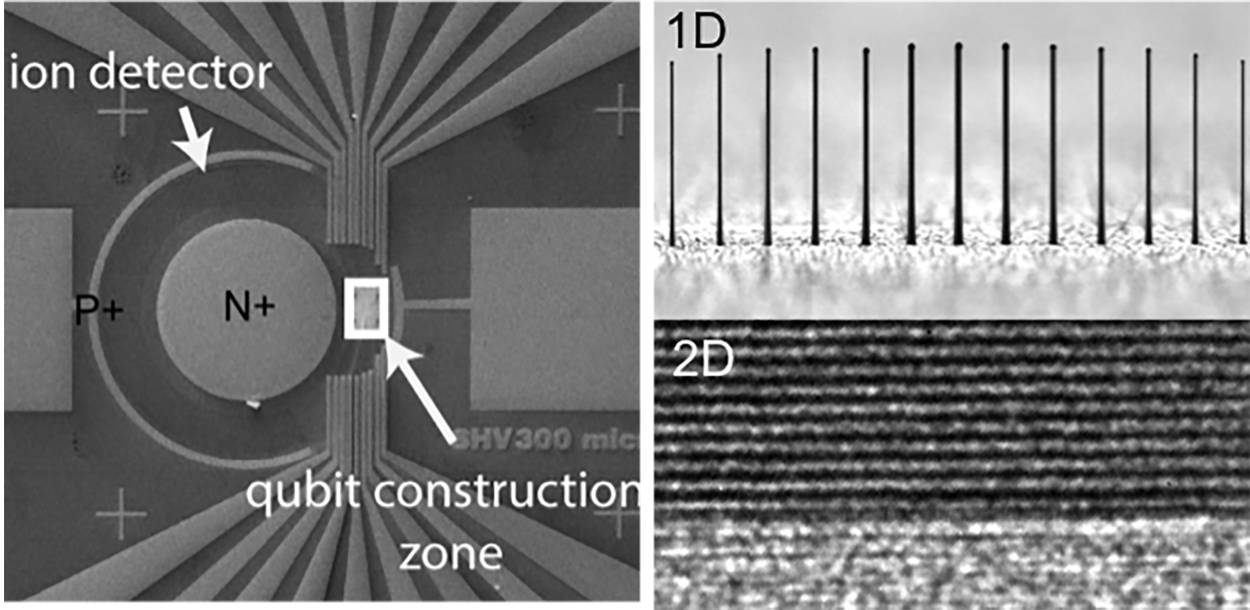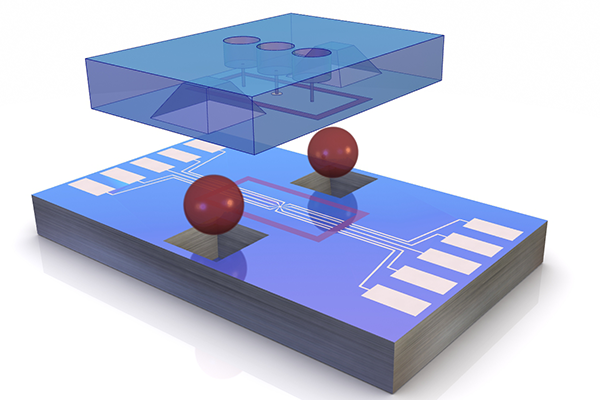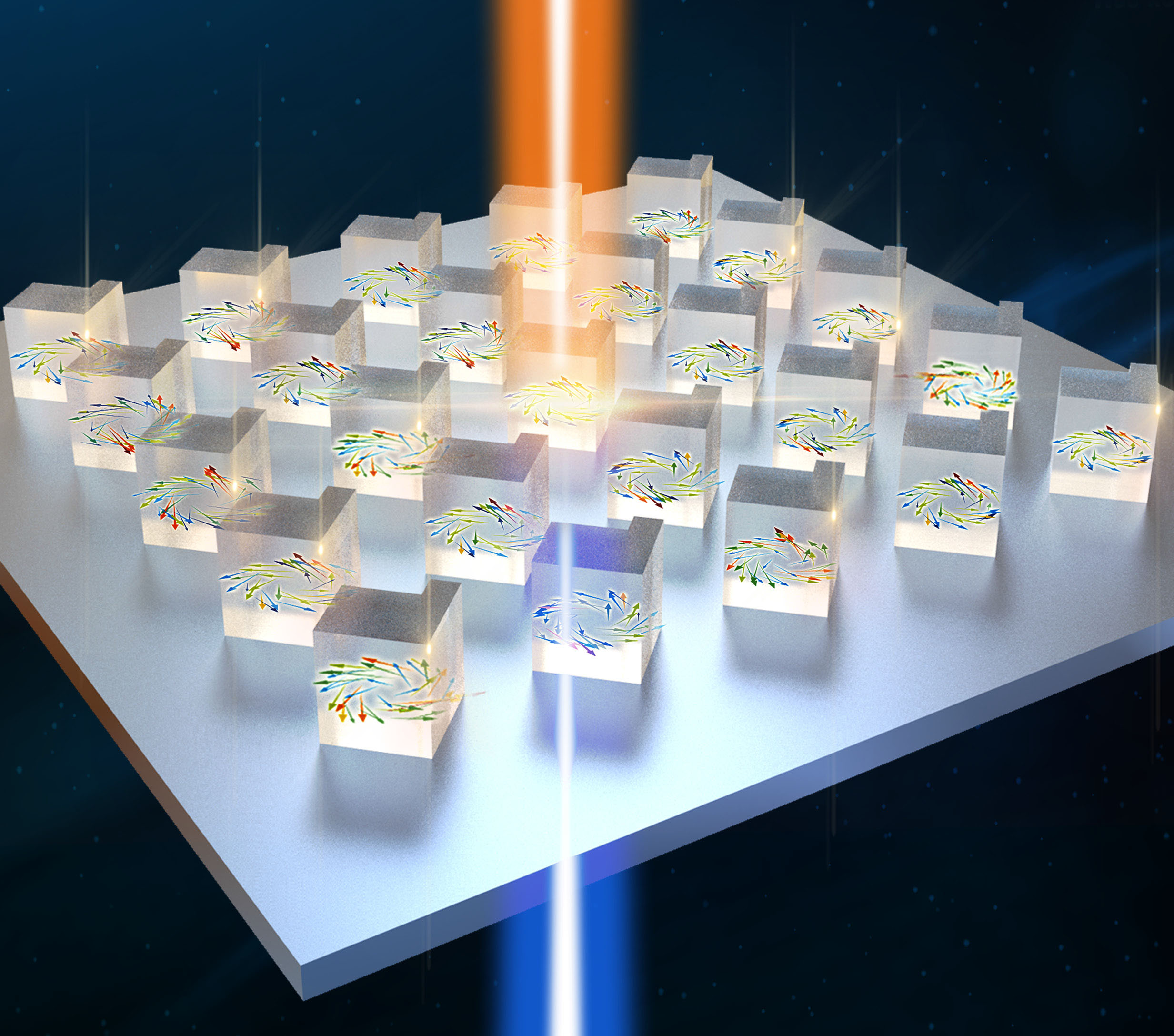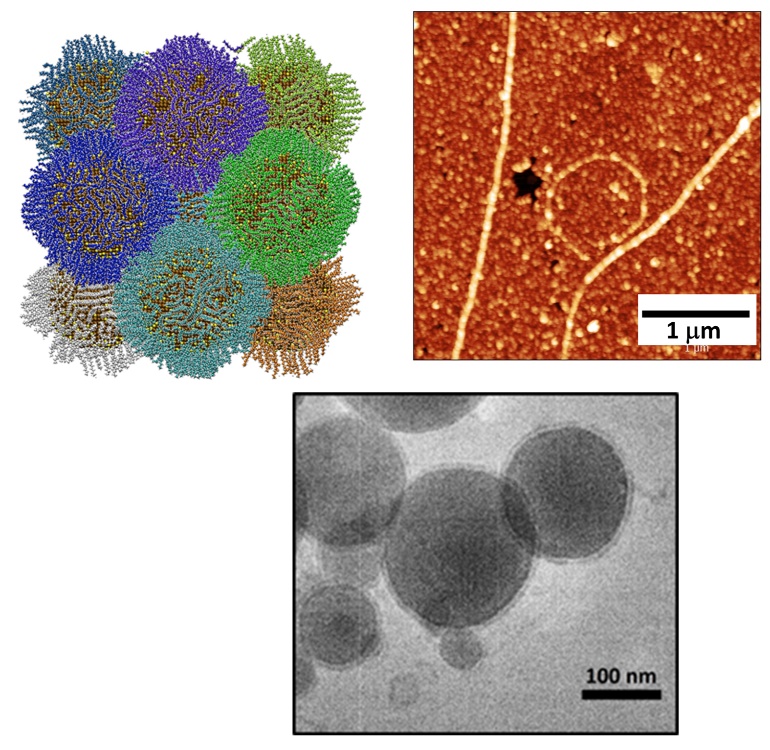
Nanoscale integration is revolutionizing the way we live, in the same way that the development of the semiconductor-based integrated circuit (computer chip) did. The development of the chip required the capability to integrate a large number of resistors, capacitors, diodes, and transistors on a single platform. Once developed, the chip enabled countless innovations. CINT envisions similarly transformational technologies will ultimately emerge from nanomaterials integration.
While nanoscale materials exhibit extraordinary physical, chemical, and/or biological properties, isolated or individual nanoscale materials are scientifically interesting but rarely make a significant technological impact. Building blocks comprised of individual nanoscale materials are commonly integrated with other materials into architectures that amplify their properties (up-scaling) or lead to new ensemble behaviors (emergent phenomena). By surveying the integrated environments of greatest potential impact and developing our fundamental understanding of the principles that govern these integrated properties and behaviors, we can capitalize on the greatest potential for nanomaterials to have an enduring impact on scientific and technological innovations.
 Mike Lilly,Thrust Leader
Mike Lilly,Thrust LeaderThe Quantum Materials Systems (QMS) Thrust has deep, integrated expertise in the areas of quantum materials (QM), quantum information sciences (QIS), and microelectronics. We engage in novel research and support user needs in materials synthesis, materials characterization, quantum measurements, and the theoretical understanding of quantum phenomena to better address fundamental science questions related to quantum phenomena. The focus areas for the QMS thrust include: 1) elucidating and utilizing interactions between QIS systems and the environment, 2) precisely controlling the preparing QMs and QIS systems, 3) discovering emergent phenomena in QMs under various excitations, and 4) integrating QMs in solid-state architectures for applications at the macroscale.
Key integration science challenges include:
 Nan Li, Thrust Leader
Nan Li, Thrust LeaderThe In-situ Characterization and NanoMechanics (ICNM) Thrust aims to accelerate the discovery and manufacturing of novel materials by understanding the mechanisms that drive nanomaterials evolution and degradation. ICNM utilizes near-real-world characterization environments, including relevant temperatures, pressures, irradiation, plasma fluxes, surface corrosion/chemical interactions, and external fields (e.g. electrical/magnetic bias, or strain). The vision of ICNM Thrust is to develop and implement advanced experimental tools, modeling methods, and customized machine learning (ML) algorithms to quantitatively measure, deeply comprehend, and accelerate the understanding of the continuum-of-states exhibited by real-world materials in complex environments.
Key integration science challenges include:
 Jennifer Hollingsworth, Thrust Leader
Jennifer Hollingsworth, Thrust LeaderThe Nanophotonics and Optical Nanomaterials (NPON) Thrust seeks to detect, understand and control fundamental photonic and electromagnetic interactions in nanostructured optical and heterogeneous materials. To enable technologies that impact national priorities, we design, discover and implement optical nanomaterials and photonics phenomena, with cultivated capabilities grouped in four research directions: 1) Precision Synthesis and Hetero-Integration; 2) Optoelectronic, Nonlinear and Quantum Metasurfaces; 3) Multimodal Optical Characterization and Control, and 4) Quantum Chemical Modeling and Quantum Optics Theory Enabled by Machine Learning and Large-Scale Simulations. The RDs reflect the world-leading expertise of NPON staff and our partnerships with affiliate scientists, especially from the Laboratory for Ultrafast Materials and Optical Science (LUMOS) and affiliated theorists.
Key integration science challenges include:
 Dale Huber, Thrust Leader
Dale Huber, Thrust LeaderThe Soft, Biological, and Composite Nanomaterials (SBCN) Thrust explores the organizational principles of multi-scale assembly development of bioinspired, soft, and hybrid nanocomposites. The thrust leverages experimental, computational, and advanced characterization expertise to address key questions in functionally integrated systems that require a deep understanding of structure and the coordinated interactions of components across multiple length scales. SBCN addresses this challenge by focusing on four key research directions; 1) computational materials science, 2) synthesis and fabrication of building blocks, 3) directed assembly and advanced manufacturing, and 4) soft materials characterization. The scientific goals of the thrust are accomplished through a robust internal science program coupled to collaborative interactions with a diverse community of CINT users.
Key integration science challenges include: